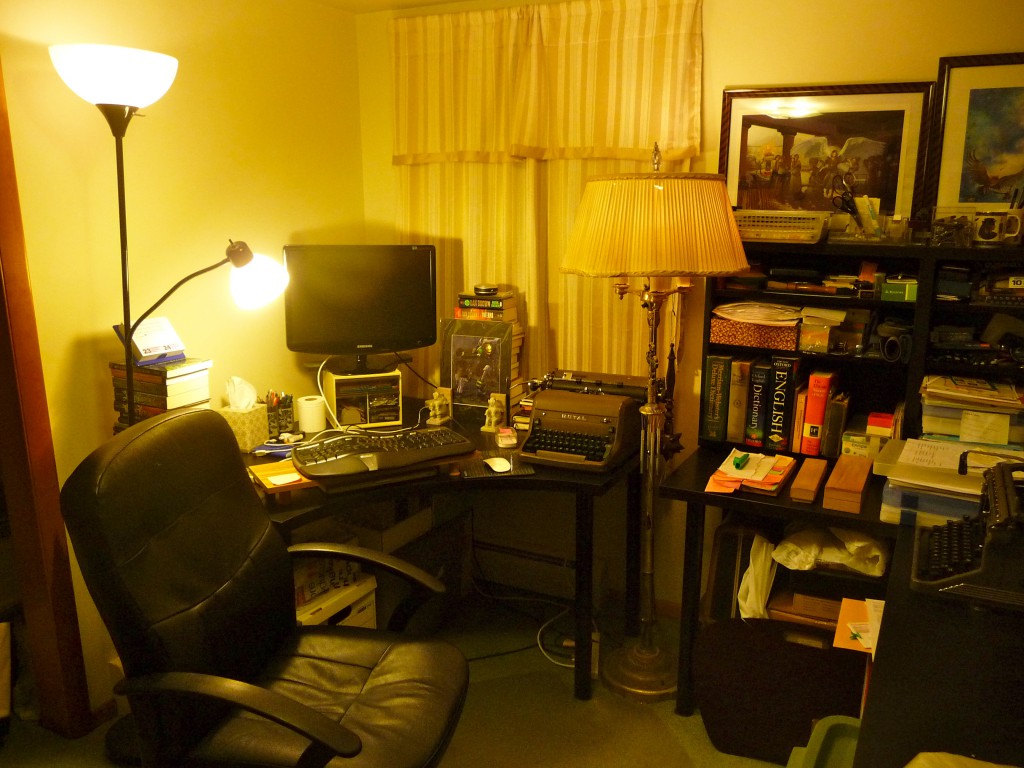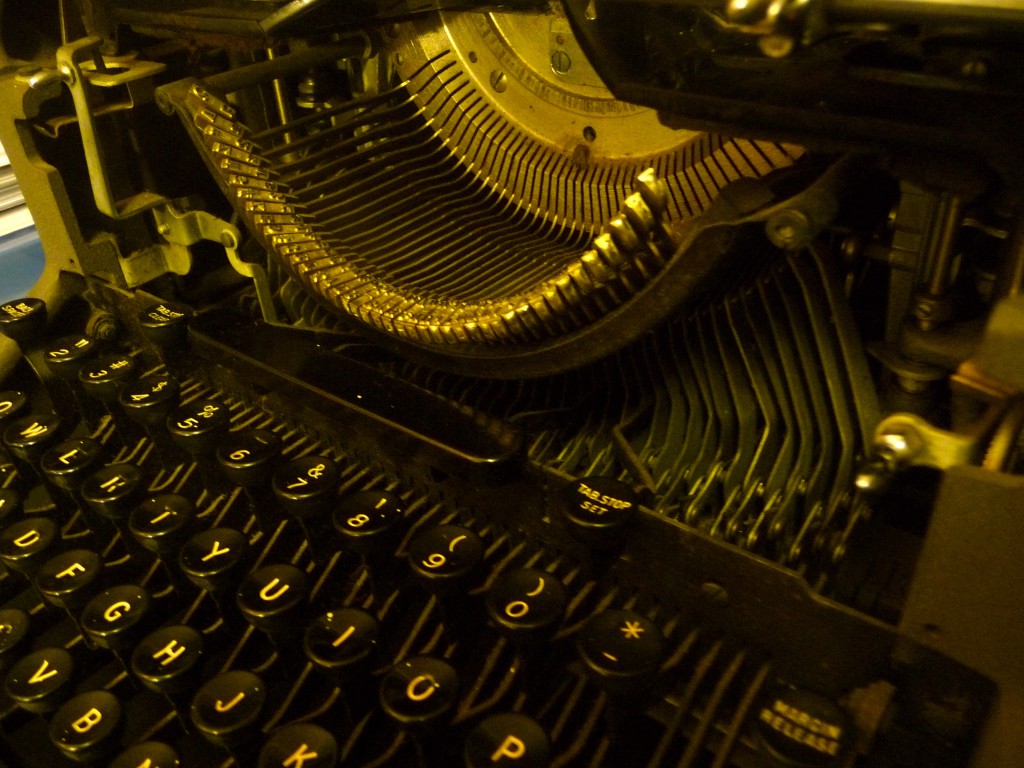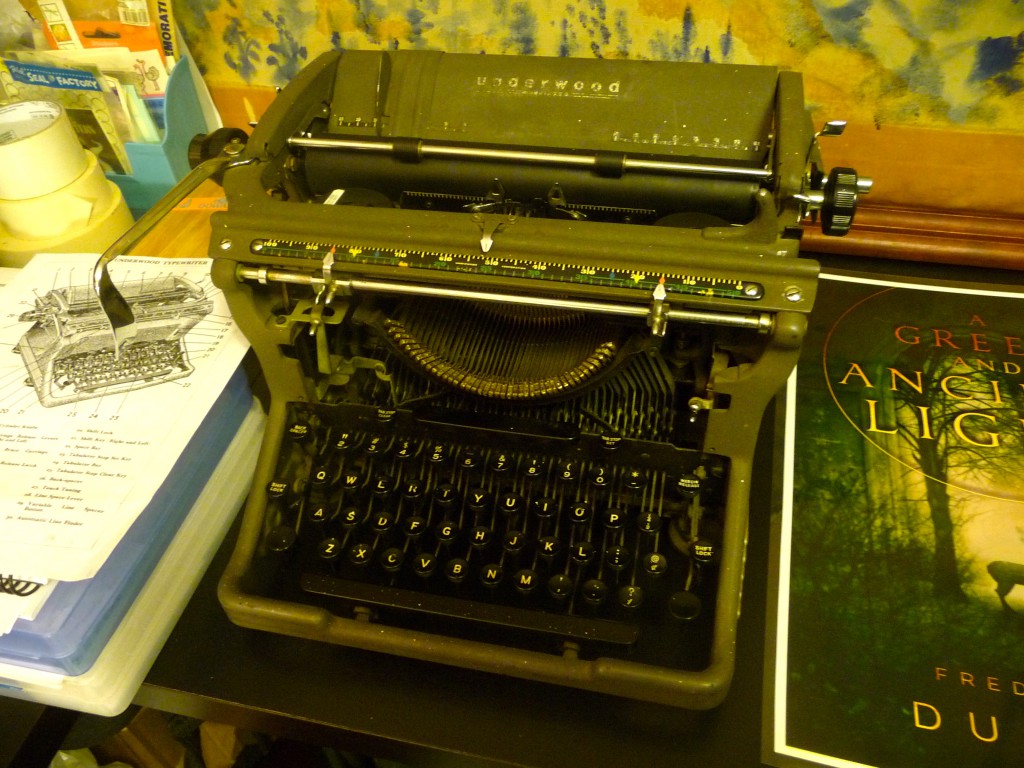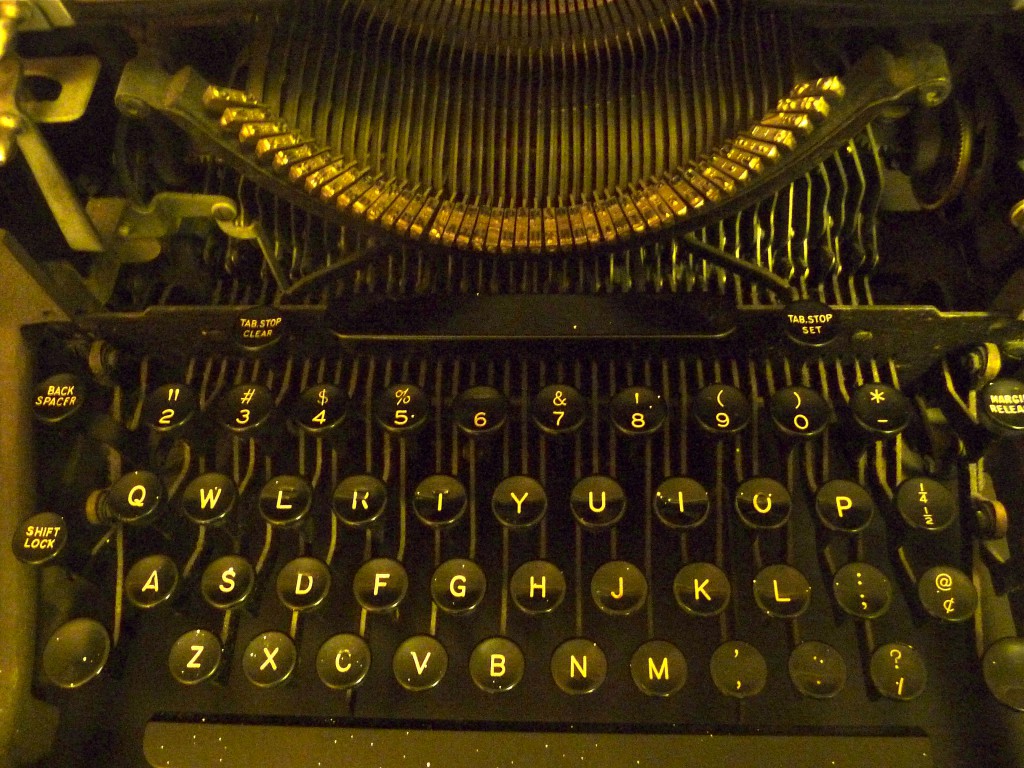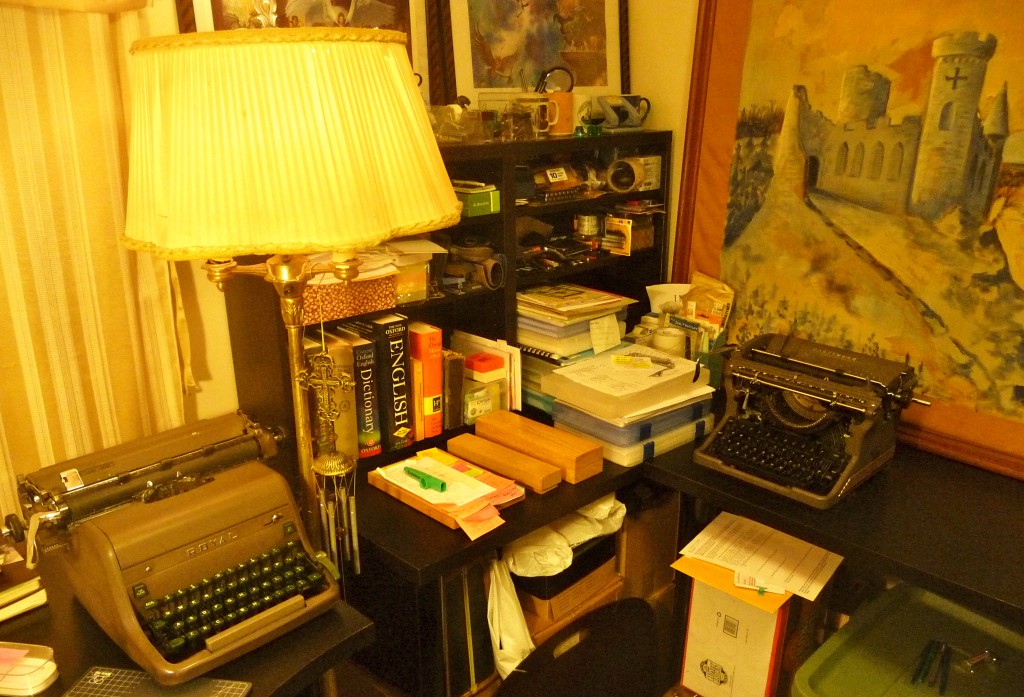Here’s my newly cleaned and organized writing space for the new year:
The good dictionaries and style books are close at hand. Ergonomic keyboard, check. I’m on the black keyboard now; in another month or so, I’ll return to the white one. I no longer have six of them like I did in the old days, but I like having two, plus the one that’s built into the laptop. Plus, well, the AlphaSmart Neo. But the newest thing I’ve rediscovered is . . . vintage manual typewriters!
This is the beautiful old Underwood, 1951, that Julie got me as a surprise Christmas present. Her dad heroically got it working in time for Christmas, an endeavor which involved building a new part for it.
Some of my writer-friends collect old typewriters. For awhile, I thought that sounded like too bulky a hobby to get into. After all, it’s the 21st century — don’t computers do everything we writers need and more? Oh, I generally understood the appeal of those vintage machines. I remember the old L. C. Smith that lived at our house since before I was born until I was emptying out the house after my parents passed away. I think by then it had developed some minor glitch, something that could have been easily repaired. But the computer had so long been my primary writing tool . . . and I was in full clean-out-the-house mode . . . that I gave that marvelous machine back to my aunt, who had saved up and bought it when she was a teenager. She sold it a few years later, when she was downsizing. Now I kick myself for ever letting that Smith out of my hands!
Well, it’s an obsession I understand now, this need to have a few of these faithful old writing machines back in our lives. They exude a faint perfume of age and oil and ink. Peer closely into their depths with a magnifying lens, and you can see the shadows of the past . . . the ghosts of uncounted words and stories. Yes, I have lovingly dusted with a Q-tip the tireless arms that hold these keys.
So here is my second new-old typewriter, on the left: a Royal from 1953. It’s a delight to type on, with its setting for touch sensitivity. It takes very little effort to strike the keys. It belonged to another writer before me, a person I never met. Isn’t that another wonder of these machines? Computers almost never get handed down. Quite the contrary — they are as grass. But manual typewriters are more like ancestral swords or houses, more like violins. Each of them has known many of us.
I love the light in my office, too: plenty bright, yet soft and yellowish and old, the light of another era.
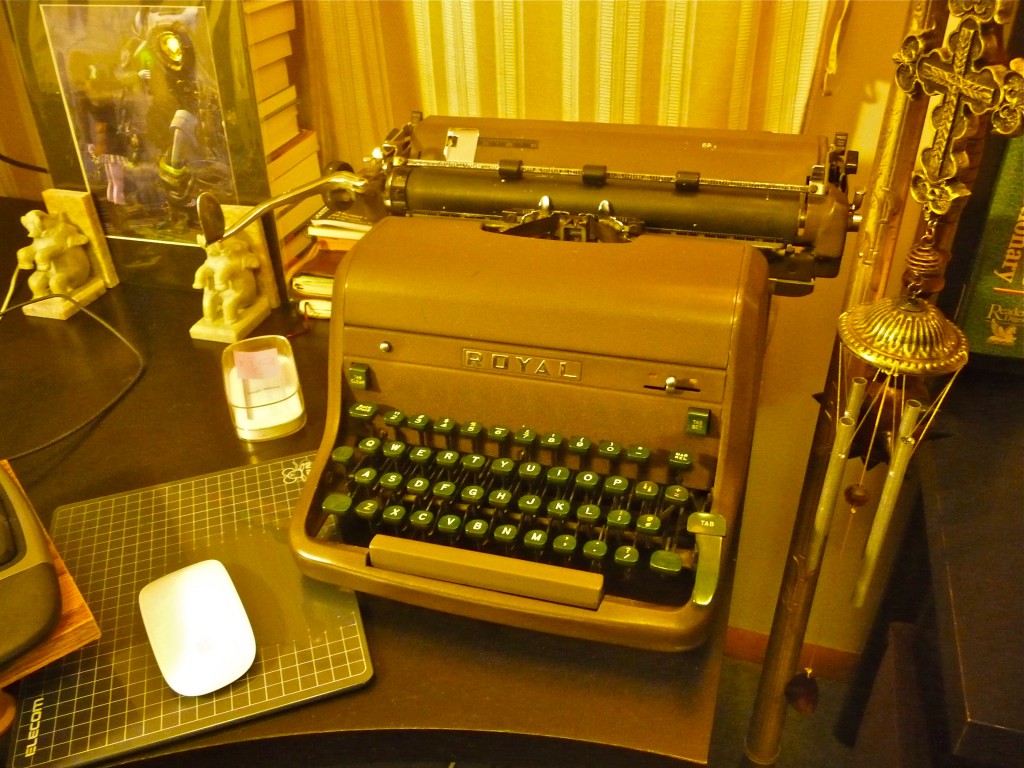
This Royal is some twenty years newer, I think, than the one that lived in our old house. The white letters go all the way through the green plastic keys, so that they will never wear off.
The Mac’s Magic Mouse sits on its pad beside the Royal. They’re different generations of one family.
For me, typewriters aren’t for decoration. They have work to do here, mostly typing envelopes and letters. I will almost certainly find ways to let them participate in some stage of fiction writing, too — not drafts, I’m guessing, but notes — notes on ideas, on what is to come in the chapters ahead. So satisfying these instruments are! No dependence on electricity . . . so simple, so concrete, so tangible and physical. What’s the sound of a typewriter’s hammer striking the paper? — Thatch, like the roof of a cottage? So, thatch, thatch, thatch — crisp black letters go directly onto the page, precisely where we’ve aimed them. Letters become words, words become sentences, sentences become stories, stories become worlds that we share across time and space. It all begins with thatch.
Behold — miracle machines! Right here on our desktops!
Joyous news: a third typewriter is on the way! On Wednesday, a small, portable vintage Remington is due to join these other two. And yes, I’ll stop collecting there . . . for now, anyway. Three of the four great old families of typewriters will be represented: Underwood, Royal, and Remington. Someday, the Grail: a vintage Smith-Corona. But those are quests for the future. Even the best and kindest wives may be cool with three old writing machines coming to stay, but at some point they must take husbands gently by the arm and lead them back to Earth. “Be patient, Honey,” they say. “There will be other Christmases.”
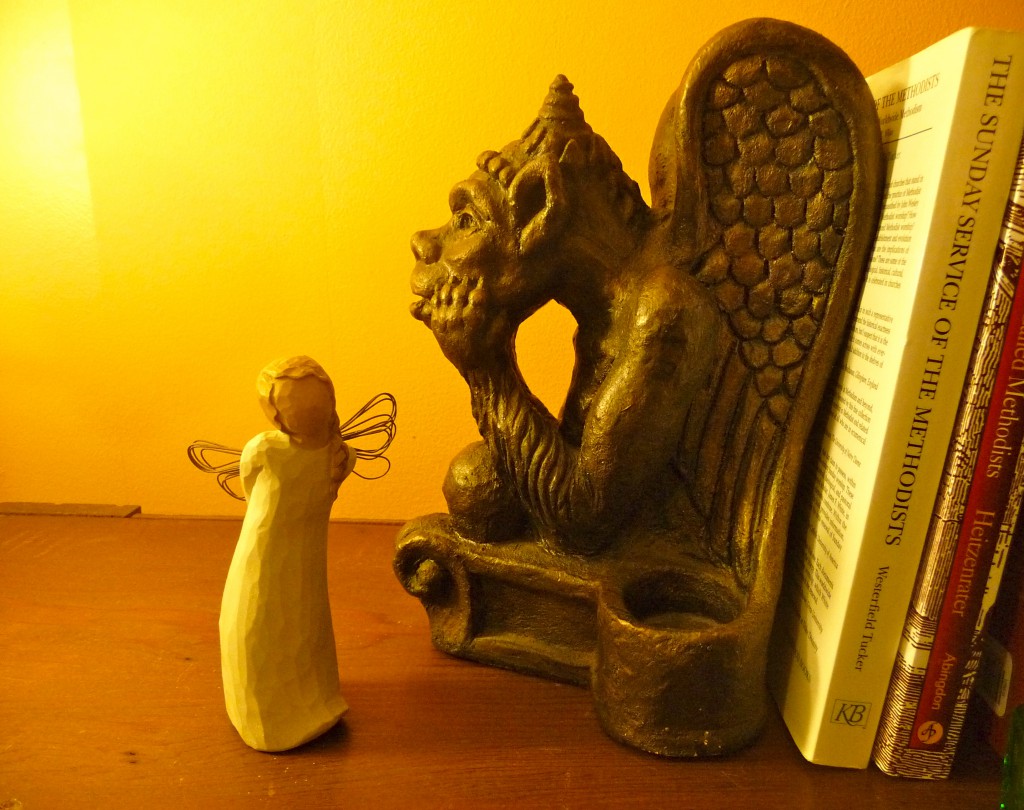
Angels and gargoyles have much in common with the best wives: beautiful (the angels, anyway), vigilant, strong, posting (as Milton says) o’er land and ocean without rest; guarding the cathedral, ever faithful.
And that’s the truth, and that’s the wisdom to be heeded. Tools are tools, but we must remember what they’re for, after all. It’s about the stories. Back to work on the book!
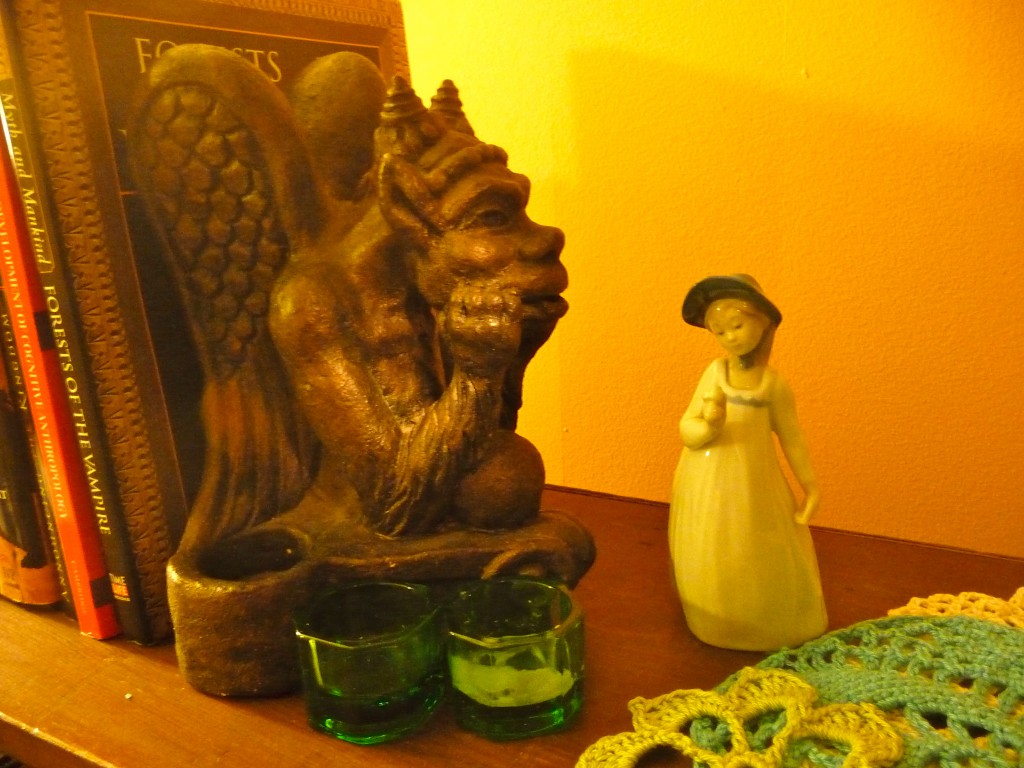
A scene from the series-in-progress — “Where do ideas come from?” they always ask the writers. “Well,” one answer goes, “if you have the right stuff on your shelves . . .”
